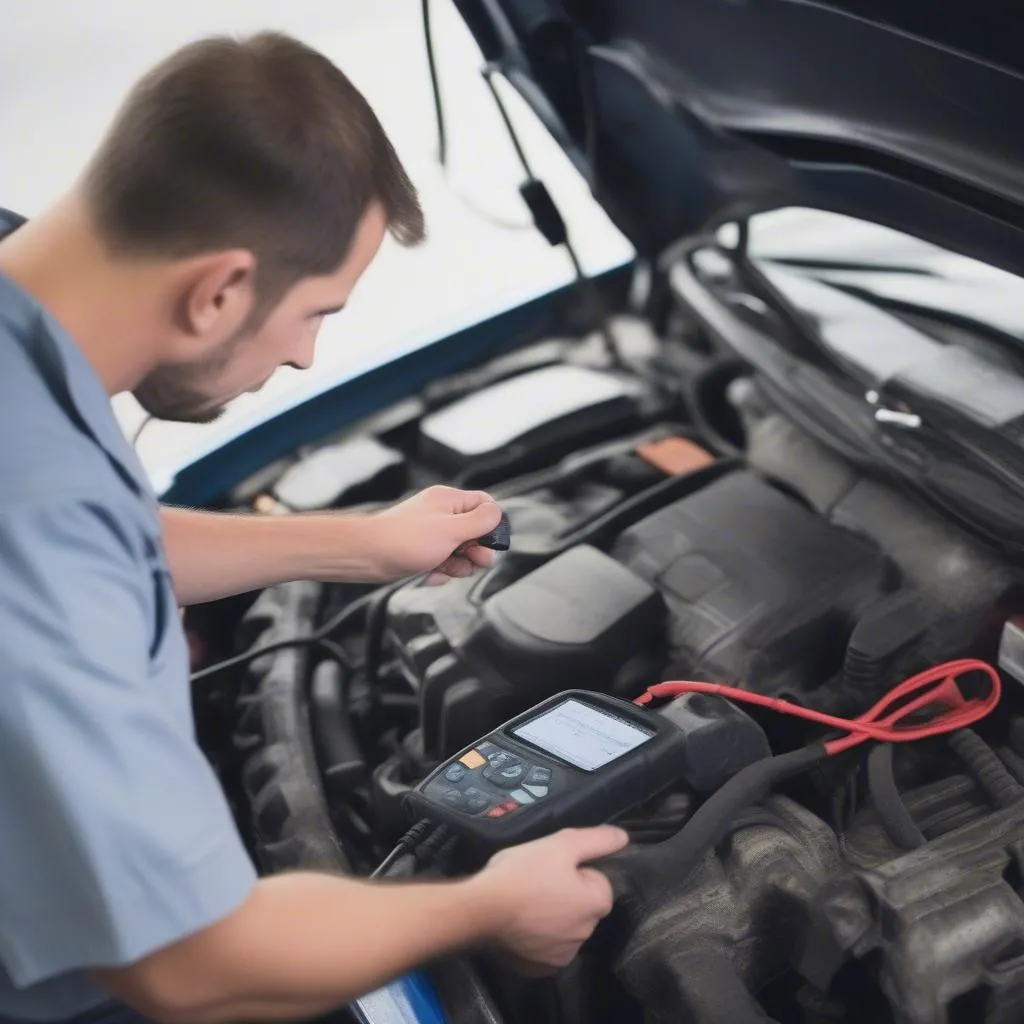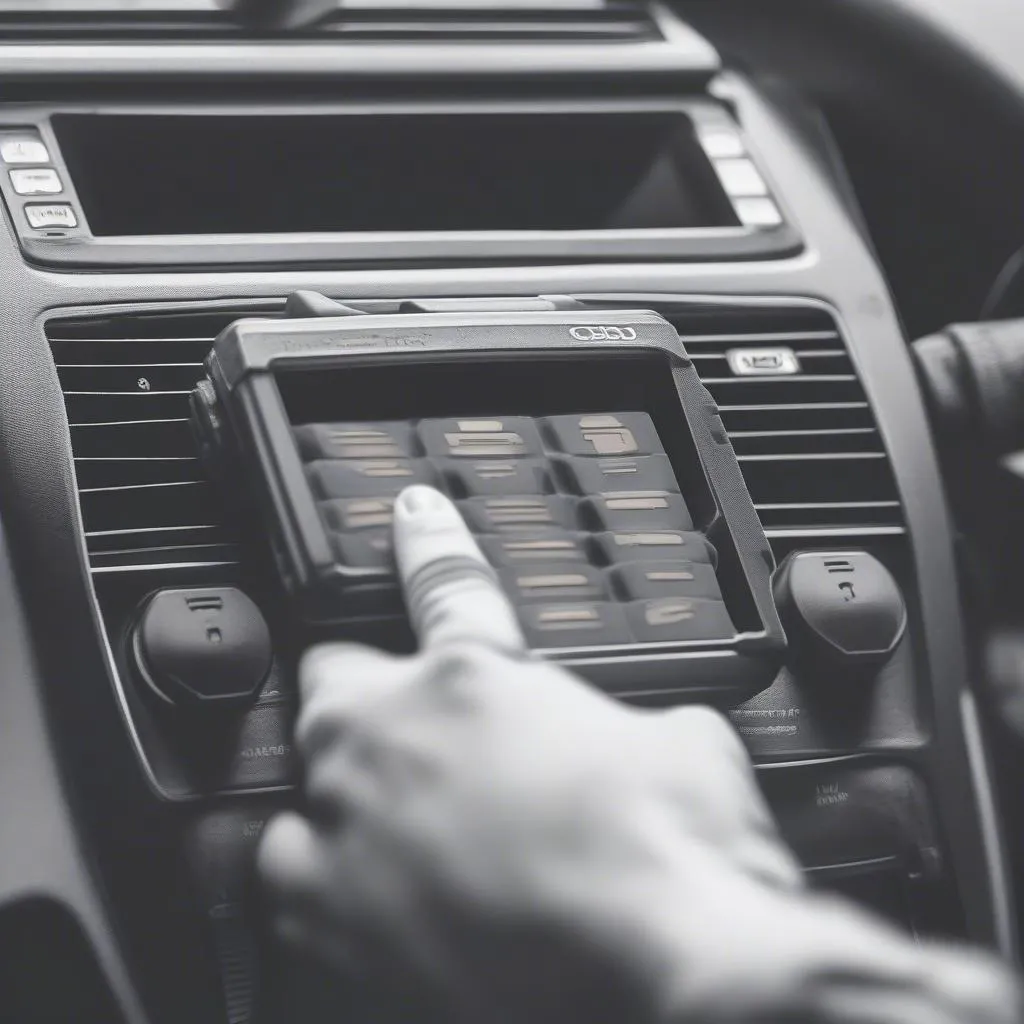Have you ever taken your car to a mechanic and heard them talk about “DT codes” or “DTCS” on a scan tool? If you’re not familiar with automotive diagnostics, these terms can be confusing. But don’t worry, we’re here to explain what DTCs are and how they can help you understand what’s going on with your car.
What Does DTC Mean?
DTC stands for Diagnostic Trouble Code. It’s basically a code that your car’s onboard computer (OBD-II system) uses to communicate with a scan tool about a problem it’s detected. Imagine it like a doctor using a medical scanner to diagnose a patient; the scan tool is the doctor, and the DTC is the diagnosis.
Understanding Diagnostic Trouble Codes
The OBD-II system in your car is constantly monitoring various components and sensors, looking for potential issues. When it detects a problem, it stores a code that explains what went wrong. These codes are like secret messages telling you what’s wrong with your car.
The Meaning Behind the Codes
These codes are divided into several parts:
- Manufacturer Code: This part identifies the specific car manufacturer (e.g., Ford, Toyota, BMW) that programmed the code.
- System Code: This indicates the specific system experiencing the issue (e.g., Engine, Transmission, ABS).
- Code Number: This is a unique identifier for the specific problem within the system.
How DTCs Help You and Your Mechanic
Imagine this: You’re driving down a highway and suddenly, your car starts making a strange noise. You’re not sure what’s wrong, but you know it’s time to see a mechanic.
Instead of blindly guessing what the problem might be, a mechanic can use a scan tool to read the DTCs stored in your car’s computer. This provides them with valuable insights into what’s causing the issue, leading to a faster and more accurate diagnosis.
Example: A Check Engine Light Story
Think of a time when you’ve had a “Check Engine” light come on. This is often a sign that your car’s computer has detected a problem.
- Scenario: Imagine you’re driving a 2023 Ford Mustang on a trip across the country. Suddenly, the “Check Engine” light starts flashing. Your heart skips a beat, and you pull over to the nearest gas station.
- Mechanic: You call a local mechanic, who arrives with a scan tool. The scan tool reveals a DTC that indicates an issue with the oxygen sensor in the exhaust system. This code provides the mechanic with valuable information about the problem, which could be a faulty sensor or a more serious exhaust leak.
Common DTCs and Their Meanings
Here are some common DTCs you might encounter:
- P0171: System Too Lean (Bank 1) – This indicates that the engine is receiving too much air and not enough fuel.
- P0300: Random/Multiple Cylinder Misfire Detected – This points to an issue with one or more cylinders not firing correctly.
- P0420: Catalyst System Efficiency Below Threshold (Bank 1) – This code often suggests a problem with the catalytic converter, which helps reduce harmful emissions.
Reading and Interpreting DTCs – A Skill You Can Learn
While it’s best to leave the diagnosis and repairs to professional mechanics, you can learn some basic DTC interpretation skills yourself.
- Online Resources: Websites like Diag XCar offer information about common DTCs and their meanings. You can also use a DTC lookup tool to quickly find the meaning of a specific code.
- OBD-II Scan Tools: Affordable scan tools are widely available that can read and display DTCs for your vehicle. These can help you gain a better understanding of any issues your car might be experiencing.
What Are the Next Steps?
So, what should you do if you encounter a DTC?
- Don’t Panic: A DTC doesn’t necessarily mean something catastrophic is wrong.
- Consult a Mechanic: Schedule a visit with a trusted mechanic. They can use a specialized scan tool to diagnose the problem accurately and recommend the necessary repairs.
- Don’t Ignore It: Ignoring a DTC can lead to further damage and potentially expensive repairs down the line.
 DTC Codes on a Scan Tool
DTC Codes on a Scan Tool
Frequently Asked Questions
Can I Clear a DTC Myself?
While some scan tools allow you to clear DTCs, this doesn’t address the underlying issue. The “Check Engine” light might turn off temporarily, but the problem will likely reappear unless it’s properly repaired.
Can I Use a Generic Scan Tool for European Cars?
Not always. While many generic scan tools can read DTCs for OBD-II compliant vehicles, some European cars have specialized systems that require more advanced tools like “Dealer Scanners.”
What About DTCs for Other Systems?
The OBD-II system primarily focuses on engine-related issues. However, other systems in your car, such as the ABS, Airbag, and Transmission, also have their own diagnostic systems and codes.
Stay Informed and Drive Safely
Understanding DTCs and the OBD-II system can empower you to be a more informed car owner.
 OBD-II Scan Tool Connected
OBD-II Scan Tool Connected
Want to learn more about using diagnostic scan tools and how to interpret DTCs? Check out these resources:
Need Help with Diagnostics? Contact Us!
For expert assistance with your car’s diagnostics, don’t hesitate to contact us via WhatsApp at +84767531508. We have experienced automotive technicians available 24/7 to help you understand those pesky DTCs.
We’re here to help you keep your car running smoothly. Let us know your questions in the comments below!


